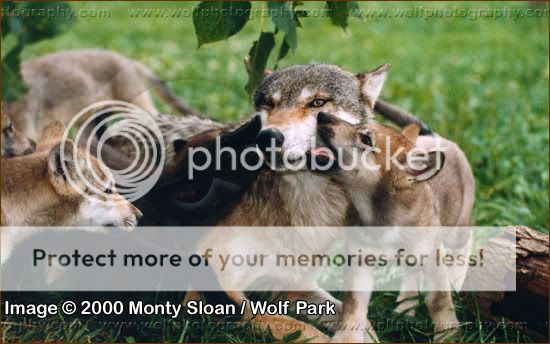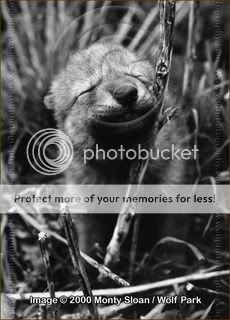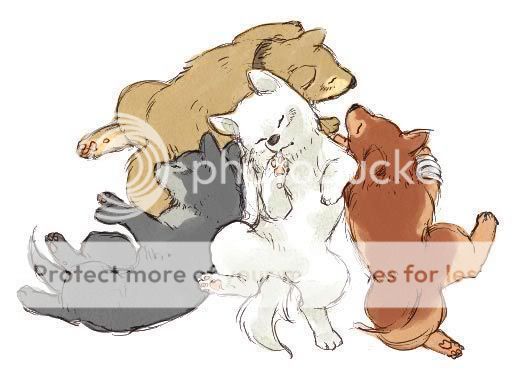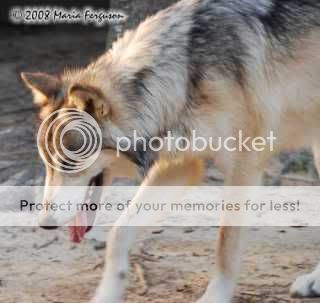OOC
Here Is where the main Rp will take place. Once you have been added to the guild and your character is up feel free to join just make sure you have read all the rules. if you post here before getting approval from one of the crew your post will be deleted. Make sure you use some form of OOC when speaking out of character.
Wolf...
Teacher,
Pathfinder,
Moon-dog of my soul.
Howling,
Singing,
Teaching how to know.
A pack made of loners, wonderers, rouges and wolves that just want a change of scenery. With Watachee at the helm this pack deals with it all. From human problems to harsh winters. Watachee welcome's all who deserve it and even some that don't. Their land has much to offer, a land where deer, moose, caribou, lemmings and hares are plenty. But we must not forget the hunters we share our land with. The Bears, the foxes and wolverines. There is safty in numbers. Will you run with us or walk in our shadow?
Here Is where the main Rp will take place. Once you have been added to the guild and your character is up feel free to join just make sure you have read all the rules. if you post here before getting approval from one of the crew your post will be deleted. Make sure you use some form of OOC when speaking out of character.
Wolf...
Teacher,
Pathfinder,
Moon-dog of my soul.
Howling,
Singing,
Teaching how to know.
A pack made of loners, wonderers, rouges and wolves that just want a change of scenery. With Watachee at the helm this pack deals with it all. From human problems to harsh winters. Watachee welcome's all who deserve it and even some that don't. Their land has much to offer, a land where deer, moose, caribou, lemmings and hares are plenty. But we must not forget the hunters we share our land with. The Bears, the foxes and wolverines. There is safty in numbers. Will you run with us or walk in our shadow?
Setting

A large river runs down the middle of the terra and the large meadow to the west of the river is the prime hunting area, usually occupied by the local caribou herd when the season is right. A dense forest surrounds the valley only thinning out as it moves up the mountain which is also part of this terra. Small streams can be found throughout the land and the den is located not far from the river. The winters are harsh and the summers refreshing, the land sustains the pack well.

A large river runs down the middle of the terra and the large meadow to the west of the river is the prime hunting area, usually occupied by the local caribou herd when the season is right. A dense forest surrounds the valley only thinning out as it moves up the mountain which is also part of this terra. Small streams can be found throughout the land and the den is located not far from the river. The winters are harsh and the summers refreshing, the land sustains the pack well.
The Den:
The pack can usually be found near the den when pups are present. It provides good shelter and the main den is close to the river. The pack doesn't always stay at the there. Staying in one place for too long is never smart and it's necessary to follow the herds, but for the young and injured its the safest place. There are other smaller dens scattered over the terra. About four all together.
The main den.
One of the spare dens
The River:
The river runs near the den and right through the meadow. It can get very wide in some places and it's not unheard of for a young wolf to be swept away in its rapids.
XXXXX
XXXXX
The Forest:
The home of the pack, dense and old the forest's trees seem like they could go on forever only thinning out in a few places besides the meadow. Provding homes for prey and hunters alike.
XXXXX
XXXXX
The Meadow:
The meadow is where the different heards of moose and deer are usually found grazing. The caribou tend to linger here during their migration. Sometimes the pack likes to come here to just rest, letting the pups play in the spring and summer.
XXXXX
XXXXX
The Mountains:
To the east the mountains take form, very few wolves brave the high mountain peaks especially in winter. The river flows from these mountains.
XXXXX
The Falls:
The falls are quite a ways upstream from where the river meets the den. They come down hard from high in the mountains causing rapids The falls are very beautiful especially in the warmer months and is a great place to take a mate for alone time when the busy happenings of the pacl get to be too much.
XXXXX
XXXXX
The pack can usually be found near the den when pups are present. It provides good shelter and the main den is close to the river. The pack doesn't always stay at the there. Staying in one place for too long is never smart and it's necessary to follow the herds, but for the young and injured its the safest place. There are other smaller dens scattered over the terra. About four all together.
The main den.
One of the spare dens
The River:
The river runs near the den and right through the meadow. It can get very wide in some places and it's not unheard of for a young wolf to be swept away in its rapids.
XXXXX
XXXXX
The Forest:
The home of the pack, dense and old the forest's trees seem like they could go on forever only thinning out in a few places besides the meadow. Provding homes for prey and hunters alike.
XXXXX
XXXXX
The Meadow:
The meadow is where the different heards of moose and deer are usually found grazing. The caribou tend to linger here during their migration. Sometimes the pack likes to come here to just rest, letting the pups play in the spring and summer.
XXXXX
XXXXX
The Mountains:
To the east the mountains take form, very few wolves brave the high mountain peaks especially in winter. The river flows from these mountains.
XXXXX
The Falls:
The falls are quite a ways upstream from where the river meets the den. They come down hard from high in the mountains causing rapids The falls are very beautiful especially in the warmer months and is a great place to take a mate for alone time when the busy happenings of the pacl get to be too much.
XXXXX
XXXXX
The Prey
As said before the pack's land has much to offer, perfect for a pack that's growing so quickly. Here is some of the fauna found on the terra and some of the wolves favourite snacks.
Lemmings:
a rodent, and inhabits the north of Canada. They have a pointed snout, short legs with clawed feet, small ears and a short tail. They also have whiskers, and use them in the same way as cats. They are about 10-15 cms long, and weigh about 80 grams.
XXXXX
XXXXX
Arctic Hare:
The arctic hare has a white coat in the wintertime (the winter coat), and in the summertime they are gray in color. This is also dependant on where the arctic hare lives. If they live in the far north, they keep their winter coat year round, therefore staying white. The arctic hare can reach speeds in excess of 60 km/h.
XXXXX
Moose:
A large moose can stand about 2 metres tall at the shoulder, and be over 3 metres in length, and weigh up to 500 kgs. They are strange looking creatures, and one of the most distinct features (which also sets it apart from deer or elk) is the flap of skin known as the bell, which hands from its throat.
XXXXX
Caribou:
The reindeer travels the furthest of any terrestrial mammal. The caribou of North America can run at speeds up to 80 km/h (50 mph) and can travel as much as 5,000 km (3,100 mi) a year. Migrations can number in the thousands. The most extensive migrations occur in spring and fall. During fall migrations, the groups become smaller and the reindeer begin to mate. During the winter, reindeer travel to forested areas to forage under the snow. By spring, groups leave their winter grounds to go to the calving grounds. A reindeer can swim easily and quickly; migrating herds will not hesitate to swim across a large lake or broad river.
XXXXX
XXXXX
XXXXX
The Hunters
More than just wolves share this land. Many other predators live alongside the wolves. Some more peacefully than others.
The Lynx:
The Canadian Lynx stands about 30-40 cms tall, and ranges in length from about 90-110 cms. They weigh anywhere between 10-20 kgs. The lynx has characteristics that stand out, such as its amazing triangular shaped ears with black tufts at the end. The lynx usually has thick light brown or grayish colored fur which helps to keep it warm during cold winters. They have large paws which assist them in moving fast through the snow.
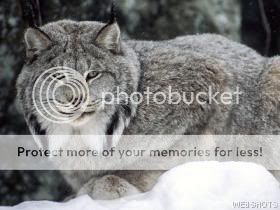
Lynx...
You know the secrets
So very well,
The Dreamtime and the magic,
But you'll never tell.
May I learn to hold my tongue,
Observe like the sphinx,
Powerful, yet silent
The medicine of the Lynx.
Badger:
The badger is about 25 cms (or two feet) heigh, and about 60 cms long. It weighs about 5-10 kgs (12 to 24 pounds). They have short legs, a tail of about 8 cms, with a distinct white stripe down the middle of their face. The fur on their head is black (apart from the stripe), and on their body it is more grayish in colour. The badger is a member of the weasel family and are primarily nocturnal.

Wolverine:
This large land animal stands about 18 inches tall, and is around 45 inches in length. They weigh about 35 pounds, and the males are larger than the females.The wolverine is also a cunning animal, and will often witness another animal hunting and killing its prey. At this point, the wolverine will confront the hunting animal and chase it off gaining a fresh kill.
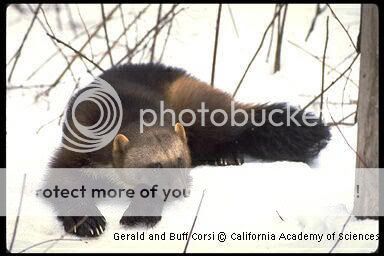
Bobcat:
They stand about 25 cms (or two feet) tall and weigh about 9 kilograms (or 20 pounds). They have a light brown coat of fur, sharp claws and sharp teeth. They are very agile creatures, and can run at speeds of up to 50 km/h (about 30 mph). They can climb trees, and like all cats, have an extraordinary sense of sight and hearing.
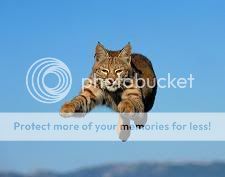
Black Bear: The black bear is found throughout North America. It is a medium sized bear, weighing in on average at 180 kilograms, but they can get much heavier than this. They range from about 1.4 to 1.9 metres in length. The black bear has curved claws which are very strong, and assist the bear in hunting and climbing.

Red Fox:
The red fox is found throughout Canada, and resembles a small dog. They weigh between 3.5 to 7 kilograms, and average about a metre in length (including tail). Their long bushy tail has a white tip. They have many predators, and are hunted by wolves, bobcats, coyotes and more. They however can be cunning and clever, and purposely run through water to evade a predator.

Arctic Fox:
an amazing little predator, with a thick dense white coat of fur in the winter, and a grayish to bluish coat in the summer months. The pads of their feet are also covered in fur, which aids them during the winter to walk on ice or snow. They stand about 25 cms tall at the shoulder, and average about 60cm in length. They have a pointed snout, which aids in digging.
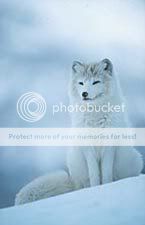
Fox...
Where are you?
Under the ferns?
Becoming the forest,
So I can learn?
Are you watching,
Invisible to me?
Trying to teach me,
To become a tree?
More than just wolves share this land. Many other predators live alongside the wolves. Some more peacefully than others.
The Lynx:
The Canadian Lynx stands about 30-40 cms tall, and ranges in length from about 90-110 cms. They weigh anywhere between 10-20 kgs. The lynx has characteristics that stand out, such as its amazing triangular shaped ears with black tufts at the end. The lynx usually has thick light brown or grayish colored fur which helps to keep it warm during cold winters. They have large paws which assist them in moving fast through the snow.

Lynx...
You know the secrets
So very well,
The Dreamtime and the magic,
But you'll never tell.
May I learn to hold my tongue,
Observe like the sphinx,
Powerful, yet silent
The medicine of the Lynx.
Badger:
The badger is about 25 cms (or two feet) heigh, and about 60 cms long. It weighs about 5-10 kgs (12 to 24 pounds). They have short legs, a tail of about 8 cms, with a distinct white stripe down the middle of their face. The fur on their head is black (apart from the stripe), and on their body it is more grayish in colour. The badger is a member of the weasel family and are primarily nocturnal.

Wolverine:
This large land animal stands about 18 inches tall, and is around 45 inches in length. They weigh about 35 pounds, and the males are larger than the females.The wolverine is also a cunning animal, and will often witness another animal hunting and killing its prey. At this point, the wolverine will confront the hunting animal and chase it off gaining a fresh kill.

Bobcat:
They stand about 25 cms (or two feet) tall and weigh about 9 kilograms (or 20 pounds). They have a light brown coat of fur, sharp claws and sharp teeth. They are very agile creatures, and can run at speeds of up to 50 km/h (about 30 mph). They can climb trees, and like all cats, have an extraordinary sense of sight and hearing.

Black Bear: The black bear is found throughout North America. It is a medium sized bear, weighing in on average at 180 kilograms, but they can get much heavier than this. They range from about 1.4 to 1.9 metres in length. The black bear has curved claws which are very strong, and assist the bear in hunting and climbing.

Red Fox:
The red fox is found throughout Canada, and resembles a small dog. They weigh between 3.5 to 7 kilograms, and average about a metre in length (including tail). Their long bushy tail has a white tip. They have many predators, and are hunted by wolves, bobcats, coyotes and more. They however can be cunning and clever, and purposely run through water to evade a predator.

Arctic Fox:
an amazing little predator, with a thick dense white coat of fur in the winter, and a grayish to bluish coat in the summer months. The pads of their feet are also covered in fur, which aids them during the winter to walk on ice or snow. They stand about 25 cms tall at the shoulder, and average about 60cm in length. They have a pointed snout, which aids in digging.

Fox...
Where are you?
Under the ferns?
Becoming the forest,
So I can learn?
Are you watching,
Invisible to me?
Trying to teach me,
To become a tree?
information found at canadianfauna.com



